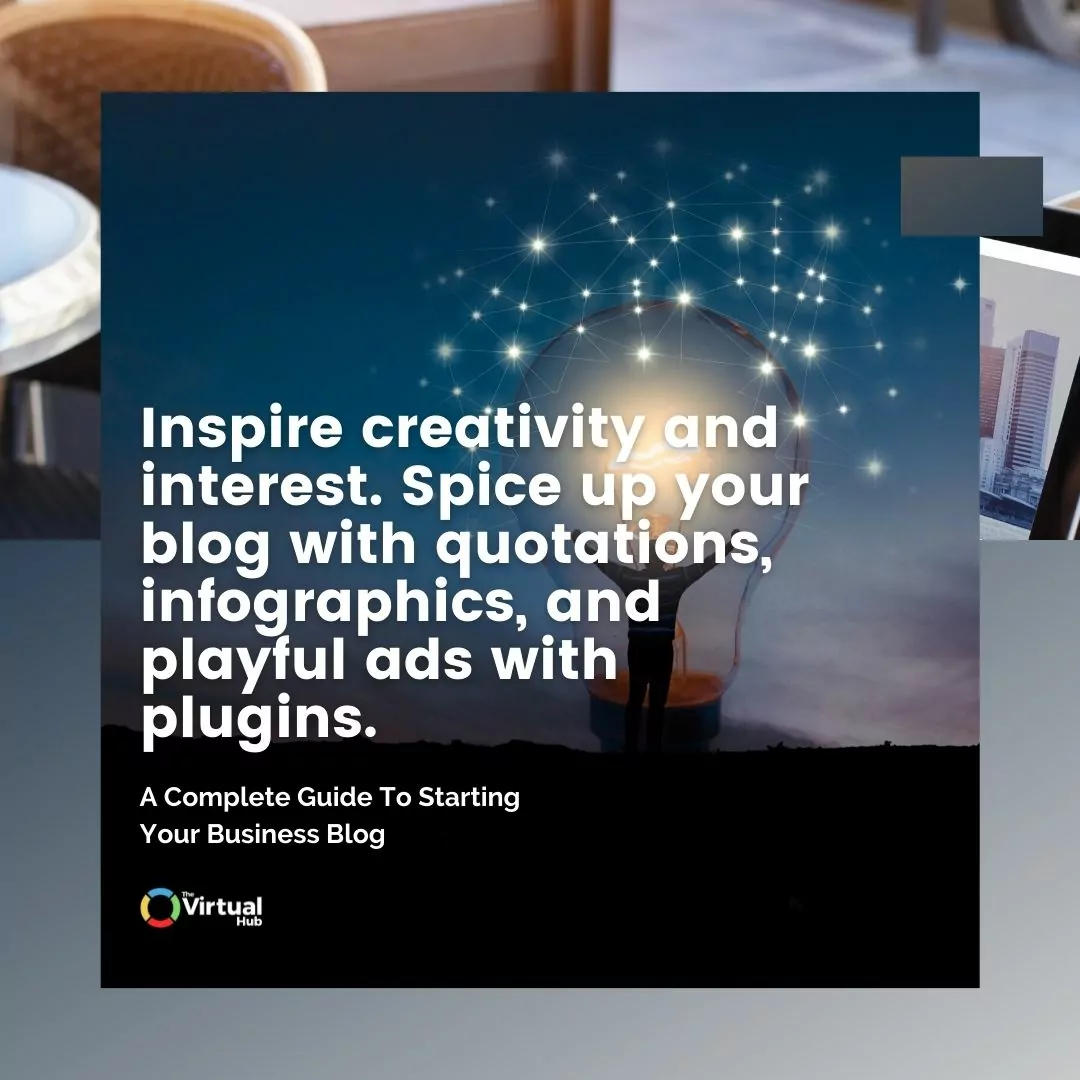Does your business or brand stand out? To do so, you have to build your presence. Having an active blog nowadays is essential because it keeps a brand alive and seen. So if you’re trying to market yours, it’s important to learn how to maximize your platforms.
RELATED: How a Virtual Assistant Can Help to Amplify Your Content Writing
There’s a vast space on the internet for every brand. It's a tough competition. Trends come and go, and audience behavior always changes. Some of the many possible channels for marketing are social media, online ads, and Google. But if you want a more collaborative experience, you have to take advantage of your website’s blogs.
A blog helps you connect and relate your brand to your audience. It's a content marketing strategy that makes good use of your brand identity. Effective blogs can drive traffic, integrate your social platforms, and establish your credibility. If done right, you can translate readership into possible sales. So if you're a small business owner, creating blogs is a cost-effective way to boost brand awareness.

It may seem as though it’s a tedious effort to maintain a blog, but the results can be promising. By expanding your reach via audience targeting, you earn new market opportunities.
Let’s define ‘blog’ and its content
Blogs can vary from at least 500 words to a max of 2,000 words depending on the topic. It is the part of a website that holds insights, updates, promotions, and information. Some blogs also contain images, infographics, videos, and more to enhance the experience.
For you to write a blog, you must first determine your brand identity. A brand's tone and voice should align with your style of communication. Consumers resonate with a brand they relate to. You must achieve rapport between your brand and your readers through your content.

How do you write an engaging blog?
A blog has many types. There are listicles, infographics, how-tos, and more. All these follow the same title and body format that should complement to hook in readers.
The modern human attention span has only about 8 seconds. If you’re not hooking them in, you lose interest and your possible market. To keep them invested, here are some key factors to consider:
1. Identify your audience
Profiling is essential. You’re trying to convert readers into customers, so you should identify some factors.
Determine their values, interests, and behaviors. A good marketer knows how to tap several buyer personas and create an effective strategy to lure them in. Focus on who should be your main target and secondaries. Having a specific target gives you more advantage in captivating their attention.

Some essential questions you can ask are:
- What generation do they belong to? A millennial is different from a Gen Z reader. The same goes for the boomers, Generation X, and Y. Each generation has their own unique slurs and slang. This also reflects on how they read and interpret words and compositions.
- What is their job? Relating to your readers is the key to hooking them in. If their jobs align with your brand, then that gives you an advantage. Having this key lets you expound on things they can learn more about their respective fields.
- What is their active lifestyle? If your brand resonates with their lifestyle, then that gives you an edge. Are they into fitness? Cuisine? Publishing? Identifying this gives you more topics to relish and share with your audience.
2. Make a content plan
Always have a plan. Blogging can be fun but remember to work with strategy. There are times that you might feel either overwhelmed or underwhelmed with ideas. It helps to outline your content so you can plan your blogs for weeks or months in advance. Doing so can help you bank or produce a steady stream of content.
You also need to be aware of your readers’ responses and comments to help decide on your schedule. If a certain blog works, then you can expand it to several more topics then splice it to different days.
You can also integrate your social media platforms to direct them into your blogs. The most common channels to promote your blogs include Twitter, Facebook, and Instagram. Cross-platform promotions raise mutual traffic and awareness across your channels.
See what works for you. Use it as a guide for improvement and a formula to produce more loyal readers.

3. Create engaging titles and introductions
Make it catchy! Hook, line, and sinker. A bold and precise title is a major attention catcher. For some, a playful approach can work. Your tone should resonate with your target audience. It goes back to understanding your reader’s behavior.
For instance, Gen Zs are fond of puns and slurs. You can work into composing your words to match their tone to engage them to read more. Older audiences are keen on brief details so they don’t get lost in translation. Make sure that the thought is clear, and the message comes across.

It also helps to provide context at the start so they know what to expect. But make sure that you provide solutions to every conflict. Do extensive research and provide references. You must engage readers on what they need to know more than what they already know.
4. Inspire creativity and interest
A blog is a write-up but you can enhance the experience with images and interactive elements.
The VARK Model categorizes the different types of learners. It's interesting to know that most people classify themselves as visual learners. For social media users, having visuals such as infographics does the trick. The convenience of infographics lets readers engage more and absorb details faster. Spice up your blog with quotations, infographics, and playful ads with plugins. With these elements, you can keep fewer bounce rates.
It's also critical to choose the Content Management System (CMS) that fits your needs. Many blogs use WordPress for its sleek and easy interface. Also, one of its notable features is its diverse list of WordPress themes. You can choose among the many themes that match your brand's image. Choose fonts, colors, and formats that suit your style. Pick a design that's easy for the eyes.


5. Always have a Call-to-Action (CTA)
What happens when they’re done reading? If you please your readers, they crave more. Either they look for other sources, or they would look up your other blogs. Of course, we prefer the latter. Remember that a blog is an effort to convert your readers into leads.
Add a call-to-action to end your blogs. Make them subscribe, see more, and find related articles. This way, you don’t leave them hanging with a one-shot article. Show them their options and what your brand and blog can provide. It’s not enough that you keep them interested once. You want them to be your consumers so keep feeding them with a new blog every now and then.
6. Proofread and research
This goes without saying. But it's often a mistake for bloggers. Always proofread and make sure that you don’t leave an error. Check every punctuation, tense, and grammar. A credible blog is clean and error-proof. It also speaks of your values as a brand. You can proofread blog content manually or by checking it through a grammar-checking tool. An online punctuation checker could be very helpful to make your blog content free of all grammatical errors. It highlights grammar and punctuation mistakes and provides suitable suggestions to fix them with less effort.
Proofreading also involves checking your resources. Always research and provide a reliable source. A good blog brims with facts. You want your readers to absorb your insights, perspective, and knowledge. So, back it up with credibility. Don’t let a dent tarnish your image. Show them excellence and wisdom in serving proofread articles.
7. Keep blogging
The work doesn’t stop with a blog or two. It should work as a pulse or a voice for your brand. Keep producing new content to keep your visibility and connection with your audience. Four blogs a week is a safe and consistent amount. Producing fresh content adds value to your credibility and authority. With a steady stream of blog content, you stay alive and invite new visitors.
RELATED: The Benefits of Outsourcing: Understanding How it can Help Your Business


What if writing a blog is not part of your skillset?
Outsourcing blog writers is the perfect solution. Businesses relieve their team of writing responsibilities by outsourcing to experts. It saves them time, effort, and full-time employment with a separate, competitive arm.
At The Virtual Hub, we write blogs that are engaging and results-driven. Our expertise in Search Engine Optimization (SEO) will put you at the top of search engines. We help raise your rankings to place your brand at the forefront of the industry. Let us assist you in building your presence and establishing your identity in the market.
Reach us today to learn more about how we can run an effective blog to support your business!
Other Blog Posts That You Might Like
- Growing Scalable Businesses with A Virtual Assistant
- 3 Content Marketing Tips Your Virtual Assistant Can Execute For You
- Search Engine Optimization: Why is SEO Important for Your Business?
